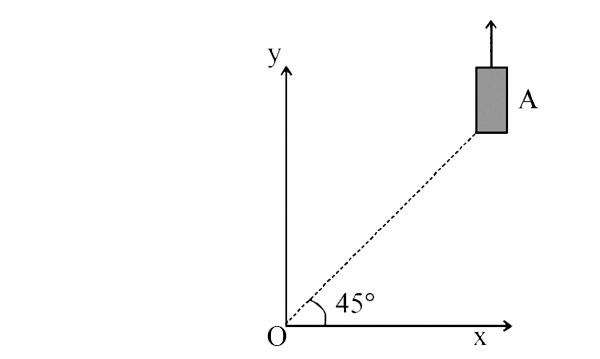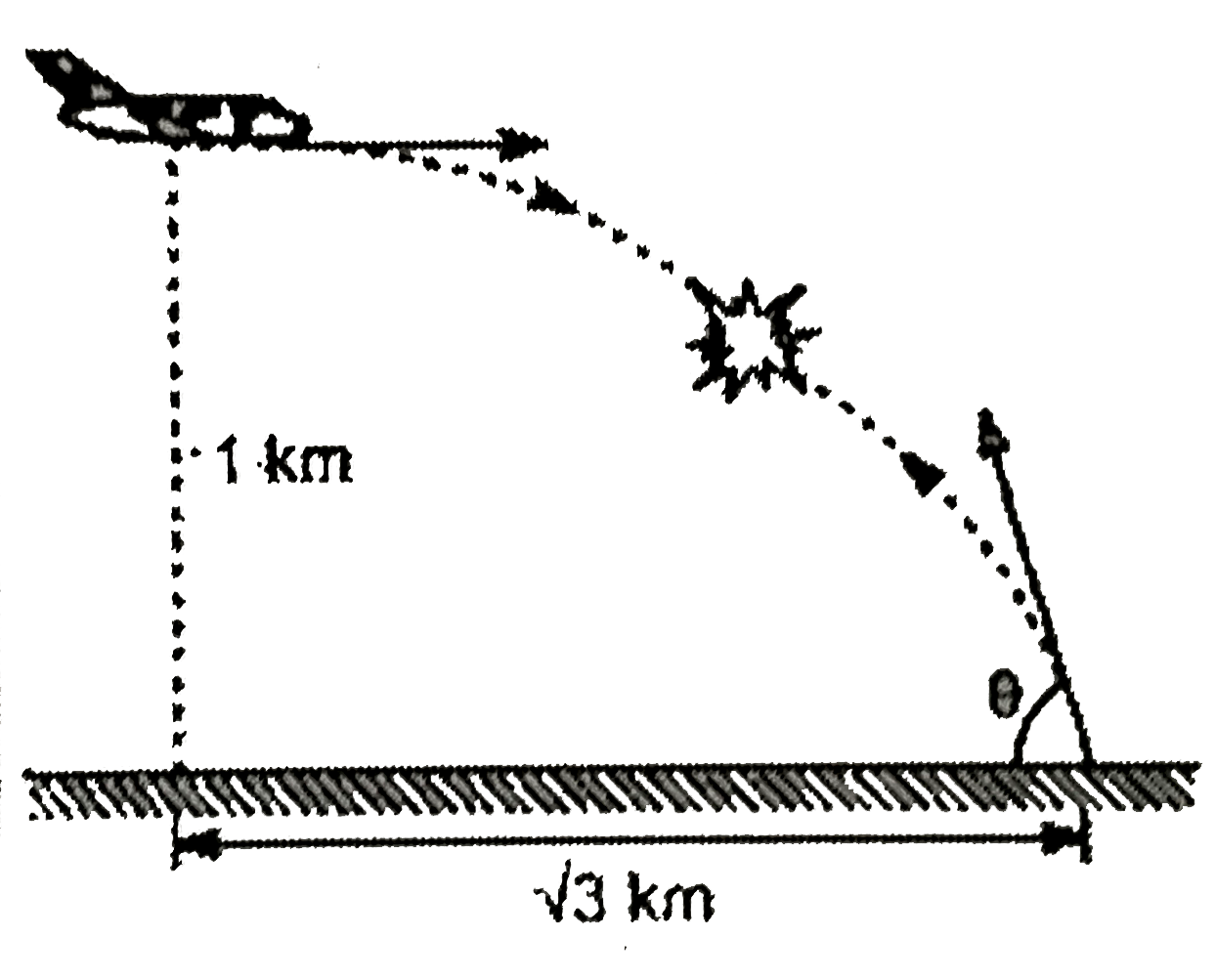Complete Solutions to Solved Examples of chapter KINEMATICS-2 of Class 11 book with complete answers and questions
| Class 11 | PHYSICS |
| Chapter | KINEMATICS-2 |
| CENGAGE PHYSICS | Solved Examples |
| Number Of Questions | 7 |
| Academic Year | 2023-24 |
Two towers AB and CD are situated at a distance d apart, as shown in figure. AB is 20 m high and CD is 30 m high from the ground. An object of mass m is thrown from the top of AB horizontally with a velocity of 10 m/s towards CD. Simultaneously another object of mass 2 m is thrown fromt the top of CD at an angle of `60^(@)` to the horizontal towards AB with the same magnitude of initial velocity as that oft he first object. The two objects move in the same vertical plane, collide in mid air and stick to each other (i) calculate the distance between the towers and (ii) find the position where the objects hit the ground.
 07:30View Solution
07:30View SolutionTwo guns situated at the top of a hill of height `10 m` fire one shot each with the same speed `5sqrt(3) m//s` at some interval of time. One gun fires horizontal and the other fores upwards at an angle of `60^(@)` with the horizontal. Two shots collide in air at a poit `P`. Find (i) time-interval between the firing and (ii) coordinates of the point `P`. Take the origin of coordinates system at the foot of the hill right below the muzzle and trajectorise in the `x-y` plane.
11:57View SolutionA large , heavy box is sliding without friction down a smooth plane of inclination `theta` . From a point `P` on the bottom of the box , a particle is projected inside the box . The initial speed of the particle with respect to the box is `u` , and the direction of projection makes an angle `alpha` with the bottom as shown in Figure .
(a) Find the distance along the bottom of the box between the point of projection `p` and the point `Q` where the particle lands . ( Assume that the particle does not hit any other surface of the box . Neglect air resistance .)
(b) If the horizontal displacement of the particle as seen by an observer on the ground is zero , find the speed of the box with respect to the ground at the instant when particle was projected .
 03:31View Solution
03:31View SolutionOn a frictionless horizontal surface , assumed to be the ` x-y` plane , a small trolley `A` is moving along a straight line parallel to the `y-axis `( see figure) with a constant velocity of `(sqrt(3)-1) m//s ` . At a particular instant , when the line `OA` makes an angle of `45(@)` with the `x - axis ` , a ball is thrown along the surface from the origin `O`. Its velocity makes an angle `phi` with the `x -axis and it hits the trolley .
(a) The motion of the ball is observed from the frame of the trolley . Calculate the angle `theta` made by the velocity vector of the ball with the ` x-axis in this frame .
(b) Find the speed of the ball with respect to the surface , if ` phi = (4 theta )//(4)`.
 06:06View Solution
06:06View SolutionAn aircraft is .flying. horizontally with a constant vefocity `=200m//s` at a height `=1km` above groun At the momement shown, a bomb is released from the aircraft and the cannon-gun below fires a shell with initial speed `=200m//s` , at some angle `theta` For what value of `theta` will the projectile shell destroy the bomb in mid-air? If the value of `theta` is `53^(3)` , find the minimum distance between the bomb and the shell as they fly past each other. Take `sin53^(@)=4//5`
 15:34View Solution
15:34View SolutionThe current velocity of river grows in proportion to the distance from its bank and reaches the maximum value `v_0` in the middle. Near the banks the velocity is zero. A boat is moving along the river in such a manner that the boatman rows his boat always perpendicular to the current. The speed of the boat in still water is u. Find the distance through which the boat crossing the river will be carried away by the current, if the width of the river is c. Also determine the trajectory of the boat.
07:54View SolutionThree particles A, B and C are situated at the vertices of an equilateral triangle ABC of side d at time `t=0.` Each of the particles moves with constant speed v. A always has its velocity along AB, B along BC and C along CA. At what time will the particles meet each other?
05:17View Solution
Solved Examples questions and complete solutions for chapter KINEMATICS-2 of CENGAGE PHYSICS (HINGLISH) of Class 11
